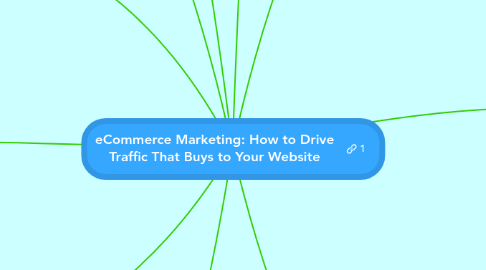
1. Chapter 10: The Metrics
1.1. Google Analytics Course
2. Chapter 9: Partnerships Marketing
2.1. How to Partner
2.2. Types of Partnership
2.2.1. Website
2.2.2. Email
2.2.3. Offline
2.3. How to Set Up
2.4. Alternative Partnerships
2.4.1. Affiliates
2.4.2. PiggyBacking
3. Chapter 8: Remarketing
3.1. Choice of Tool
3.1.1. Google Adwords
3.2. Setting Up / Getting Started
3.2.1. Targeting
3.2.2. Tagging
3.2.3. Ads
3.3. Optimising
3.3.1. Exclusions
3.3.2. Tagging
3.3.3. Audiences
3.3.4. Geo-demographic
4. Chapter 7: PPC Marketing
4.1. Structure your account
4.1.1. Quality Score
4.2. When it does / doesn't work
4.3. Optimising
4.3.1. Bids
4.3.2. Landing Pages
4.3.3. Keywords
4.3.4. Ads
4.4. Via Social media
5. Chapter 6: Search Marketing
5.1. What is search?
5.2. How to manage changes in search engine algorithms
5.3. Universal Search
5.3.1. Merchant Center / Base
5.3.2. Images
5.3.3. Places / Map Results
5.3.4. Video
5.3.5. News
5.4. Keywords
5.4.1. identify them
5.4.2. how to use them
5.5. Content
6. Chapter 5: Offline Marketing
6.1. Sales vs Awareness
6.2. Direct Mail
6.2.1. Formats
6.2.2. Data
6.2.3. Response Mechanism
6.2.4. How it all works
6.3. Shops and Shows
6.4. Advertising
6.4.1. Inserts
6.4.2. Sell off the page
6.4.3. Billboards
6.4.4. TV and Radio
7. Chapter 4: Brand Awareness Marketing
7.1. What is it?
7.1.1. Trust, how customers feel
7.1.2. Overlap with USPs
7.1.3. Expert Positioning / Stand for something
7.1.4. Consistency
7.2. Building a Consistent Feeling
7.2.1. Customer service
7.2.2. The Brand (not just logo)
7.2.3. The voice of the brand
7.2.4. Consistency - same everywhere
7.3. Above the Parapet
7.3.1. PR
7.3.2. Advertising
7.3.3. Content
8. Chapter 3: Social Media Marketing
8.1. Overall Theory
8.2. Platforms
8.2.1. Twitter
8.2.2. Facebook
8.2.3. Google+
8.2.4. Pinterest
8.2.5. and more
8.3. Share Buttons
8.4. How to use Social Media
8.4.1. Know your audience
8.4.2. Choose your tools and platforms
8.4.2.1. Automation
8.4.2.2. Efficiency
8.4.3. Strategy
8.4.3.1. Useage Guidelines
8.4.3.2. Targets and Reporting
8.4.3.3. Activity Plans
8.4.3.3.1. Content
8.4.3.3.2. Growth
8.4.4. Customer Service
9. Chapter 1: Content Marketing
9.1. Why content sits at the heart of it all
9.2. Creating a content plan
9.3. finding your content
9.4. where to put your content
9.5. how to measure the perofrmance of your content
10. Chapter 2: Email Marketing
10.1. Customer Retention
10.2. Don't Do Cold
10.2.1. Appending
10.3. Email Structure
10.3.1. From Name
10.3.2. Subject Line
10.3.3. Content
10.3.4. Tops and Tails
10.4. Plan
10.4.1. Automate
10.4.2. Segmentation
10.4.3. The Story
10.5. Performance + Benchmarks
10.6. Legalities
10.7. Deliverability
10.7.1. SPF
10.7.2. SenderScore
10.7.3. White Lists
